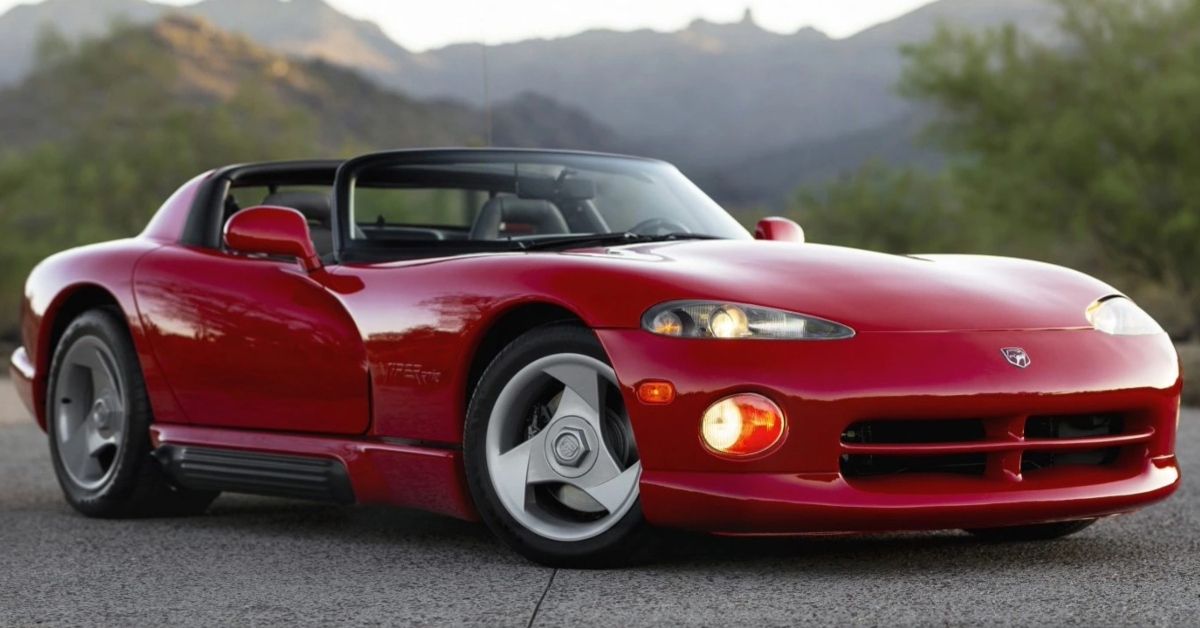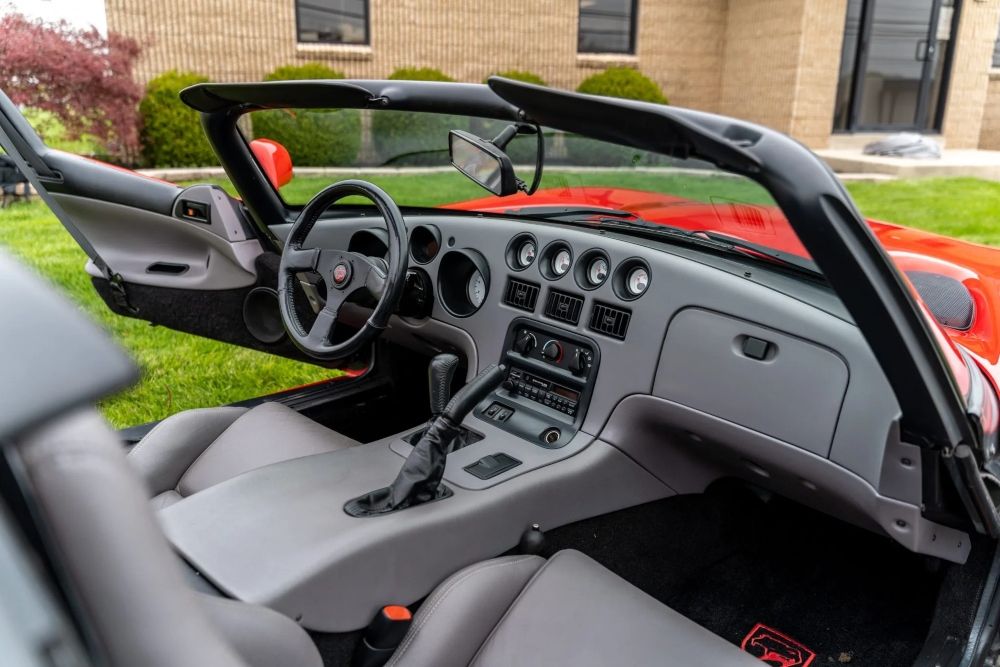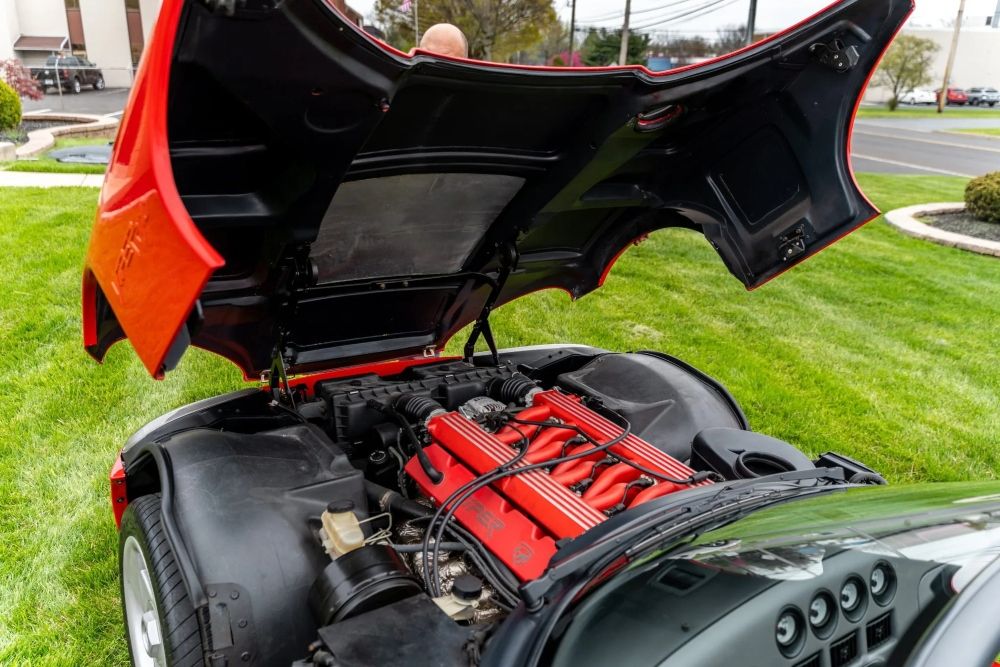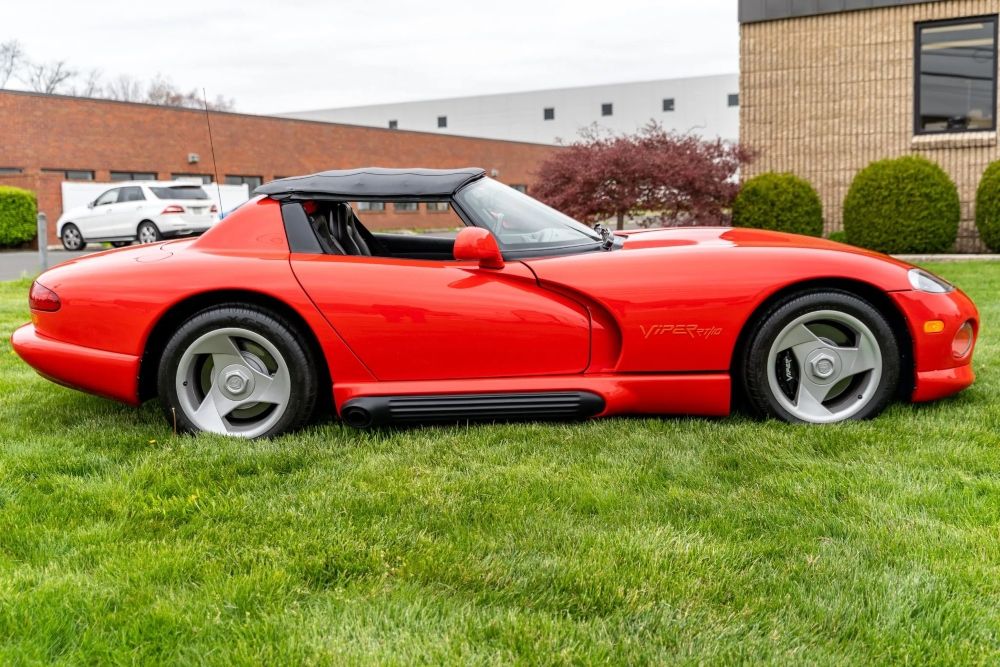Dodge produced the 1992 Dodge Viper R/T 10 Roadster through technological advancement made possible by the realization among automotive engineers in the late '80s, that high-performance vehicles could actually exceed emission limit and rules.
The head of Chrysler, Lee Iaccoca, was in charge of turning around a failing company into a global leader. After the Minivan, K-Cars, and LeBaron exceeded expectations, he prepared to go out on top. Carroll Shelby agreed to assist him in creating a Cobra in the 1990s, as Shelby then called an old acquaintance.
They started developing a roadster in 1988. The automobile underwent its first prototype testing in 1989 by the design team. After that, it served as the Indy 500 pace car before ultimately hitting the market for the 1992 model year. The Dodge Viper wasn't intended to just be fast, given its history in the Indianapolis 500.
Instead, Dodge designed it to be the most extreme and fastest car they had ever produced. The Dodge Viper helped make the brand known to many auto fans and made people take the company seriously as a producer of sports cars.
Let’s look at why the 1992 Dodge Viper RT/10 wasn’t the perfect car that everyone thought it'll be.
Despite The Dodge Viper RT/10’s Impressive Performance, The Comfort Is Quite Crude
In terms of performance, the RT/10 does a quarter mile straight in 12.6 seconds. It could also reach high speeds of more than 160 mph and twist your face in the corners of the skid pad with nearly one lateral g.
Many middle-aged, slightly balding guys who wanted to relive their youth could afford this real supercar since it was affordable.
The 1992 Viper was well-received. Orders came in, and performance-hungry purchasers waited in line with checkbooks to get first pick. According to some experts who criticized the construction for being shoddy and unnecessarily basic, it didn't even have exterior door handles, glass side windows, or a solid roof.
Even when brand-new, the Viper is suspiciously inexpensive, and it does have a few drawbacks that will make gearheads turn to other manufacturers. The fact that Chrysler/Dodge at the time thought of the Viper as primarily a driver's car helps to explain how little you received for your money.
One can find a sea of low-quality plastics as soon as you get into one of the two leather seats. The Viper was a specially designed weapon that Dodge intended for lying down, keeping quiet, and holding on. Actually, nothing else really mattered.
It was a car made to give modern gearheads the chance to purchase a factory-built rocket that would go quickly (going from zero to 100 and back to zero in 15 seconds or less). And would also stick to the road like glue and be a stylish addition to any garage.
The 1992 Dodge Viper RT/10 Has A Lot Of Costly Maintenance Issues
Piston ring difficulties in the 1992 Vipers caused concerns with high oil consumption. Early on, when the automobiles were still covered by warranties, this resulted in a number of engine replacements.
Other well-known problems include leaks from the rear main seal and timing cover gaskets on later production cars, as well as leaks from the thermostat gasket on older Vipers.
Rubber components like coolant hoses, bushings, and belts start to crack and break as Vipers become older. Experts advised a pre-purchase inspection, ideally from a shop acquainted with Vipers, to uncover any hidden problems.
Another common failure component is the pump pulley for the power steering. Furthermore, the doors would often sag after a while.
Dodge utilized the same door hinges for coupes and roadsters, and the weight of the glass and power window motors rendered the coupe doors susceptible to sagging over time. One may readily adjust the hinges to resolve the problem.
Tire availability is arguably the most well-known maintenance problem with early Vipers. The tires on the automobile were unusually large for many other cars; they were 275/40-17s up front and 335/35-17s in the rear when it left the factory. Viper groups frequently organized group purchases to obtain new tires at a discount.
Lack Of Safety Equipment Made It Such A Dangerous Vehicle
This fast car needed built-in safety barriers since it has so much torque. In fact, when it comes to a frightening driving experience, gearheads have dubbed this car the last of its kind. A sports car that blends the bare-bones design of many classics with incredible performance is the 1992 Dodge Viper.
The original Dodge Viper was devoid of airbags, traction control, and ABS, among other features. All of them are crucial for the security of any car, but especially one as quick as the Dodge Viper. The lack of these electronic aids on the 1992 model is a significant factor in the car's image, even though the automaker ultimately fitted them to the vehicle.




